Blooming Hippeastrum - a sight, from which it is impossible to take eye. Only once a year, this plant dissolves incredibly beautiful flowers-stars with a gentle aroma. And how great our disappointment when the hypadastrum does not bloom. But experienced flower flowers who know the secrets of growing this flower, such unpleasant surprises does not happen. Therefore, it is very important to know how to care for Hippeastrum, so that he delighted him every year with his beauty.
Home Hyppeastrum Plant, Description
Hippeastrum is a bulbous plant belonging to the amarylline family. His homeland is the Amazon River pool. It is from Brazil and Peru that most species apply to the rest of the subtropical regions.
- Hippeastrum has a cunning bulb: it is a thickened stem covered with closed scales. The shape of the bulbs is round or conical, and when children appear, the bulb becomes flattened. Its diameter is up to 10 cm.
- The root system of the hypipestrukum is represented by the system of pressing roots, which are tired of the bluing diacon in a circle. The roots are weakly branched, fleshy, in length up to 35 cm.
- Lukovitsa Hippeastrum forms kids, when the plant reproduction occurs. It is also possible to seed reproduction of simple nonregical species.
- Linear leaf leaves, glossy, the length of the sheet reaches 70 cm. Groobs are located on the surface of the sheet cloth. The flower arrow is released only with the foliage of the next year of vegetation. Its length is up to 80 cm. The color of the foliage is green or crimson.
- Hippeastrum flowers funk-shaped. The color is the most different: the crimson, blood-red, white, yellow, scarlet, orange, occurs a white-green coloring of petals. Many species have the main color of the petals are diluted with strokes and specks.
- Large-star flowers are large, can reach 25 cm in the diameter. Collected in umbrella inflorescences of 3-6 pieces. The fragrance of the flower is barely catchy, but pleasant. Some species are absent.
- Gippeastrum blossom is beautiful, but short-term. You can enjoy this spectacle only 10 days a year. The plant blooms predominantly early in spring, but with the help of pastures you can achieve the appearance of buds at any time of the year.
- After flowering on the floral arrow, a fruit appears - a small box with seeds of a hypapeastrum. If they give them to completely mature, they will have a 100% germination.
Hippeastrum at home, varieties
Despite the species diversity, there is also many varieties with a lot of varieties. Thanks to the operation of breeders, their number is already more than 2,000.
Garden classification of the hypipestrukum complex and is based on the identification of the shape and size of the flower, its structure (terry, simple), and also similarity with orchids. For convenience, use the separation of all kinds of 9 groups, each of which consists of a variety of varieties:
- warranty species grown in culture;
- leopold hybrids;
- types with long-tube flowers;
- hybrids with Amarillis BelaDonna;
- hybrids with miniature inflorescences;
- hybrids with hypiperum regina;
- hybrids with orchidoid flowers;
- types with terry buds;
- varieties and hybrids that do not belong to the above-described groups.
Interesting varieties:
- Lady Jane is a variety with a gentle peach color. Its flowers are large (up to 20 cm), along the edge of wavy, with yellowish-alina strokes on the corrugated surface.
- Barbados - color in colors are bright and unique: on red-burgundy petals there are barely notable white lines.
- Papilo Butterfly - Opened Flowers resemble a pack of butterflies with wings of cream and lemon-green, in the center of which the red line passes.
- Spotted - the color base of petals creamy cream, and over the entire area of \u200b\u200bthe flower is a red crap.
- Leopold - at the variety elegant colors of a saturated red color with white bordering.
- Charisma - Flowers are very large, red color with a white addition. Each petal is wavy edges with a crimson border.
- Royal - middle-grade room lamp with red colors. The edge of petals pointed, zev bright yellow color.
- Striped - produces a long floral arrow up to 100 cm in height. He has yellow-green petals are degraded by burgundy stripes.
- Elegant - the variety is narrow removal leaves, flowers are greenish in a red stripe.
Hippeastrum, growing at home
As the experience of flowerflowers shows, the magnificence of the hypadastrum largely depends on the conditions of its cultivation, correctly selected pot and the composition of the soil.
Choosing a suitable pot for Hippeastrum at home
For a home flower, Hippeastrum is suitable, but narrow vase. The size is selected in such a way that the bulb is located in the middle of the pot, and it remains 3-5 cm before its edges.
Choosing the height of the container, it must be borne in mind that the bulb is immersed in the soil only on 2/3, but it still has a well-developed root system that feeds the whole plant. And considering that Hippeastrum needs a high drainage ball, the pot is better to choose higher.
Choosing a nutrient soil for hypipestruaster at home
Hypadastrum demanding soil, so it is prepared very carefully:
- An important point is the ease of soil. It must perfectly skip air and water to provide a bulb with everything necessary.
- The nutritional nutrition is important: in the poor substrate, the hypadastrum will not grow. You also need to use the soil with a pH not higher than 6.
- For the hypadastrum, a multicomponent nutrient soil is needed, which is difficult to cook on its own, therefore it is easier to purchase a special soil for bulbous cultures and add some sand into it.
- But you can make a soil and self-sample of two parts of the clay and turf, part of the humor, as well as the peat parts, parts of the sheet soil and the part of the sand.
How to choose a healthy luxury luxury bulb
Easy to raise hypipers at home, putting a good bought onion. It is for sale in all flower shops, but making a choice, you need to be able to evaluate the quality of the goods, since spoiled bulbs will only bring frustration.
Lukovits Selection Rules:
- Make a purchase of bulbs preferably in spring or autumn. At another time of the year, the bulbs are not suitable for pastures.
- Purchase better large bulbs. Young children have too meager supply of useful substances that will not give the opportunity to grow a strong plant that will bloom this season.
- A healthy bulb must have a durable neck and a dense don, and the scales are completely dry.
- On the bulb should not be traces of rot, seals, dark spots.
- If the bulb is sold in a pot, and not in the package, you need to pay attention to the roots protruding from the drainage holes: in the normal one they are white, dry, without mucus and stains of another color.
WHERE TO PLEASE VANADE WITH Hypadastrum at home
- The plant during the growing season prefers a moderate temperature + 17 ... +23 ˚С, and during the sleep period - +10 ˚С.
- Hypadastrum - the flower of sollide, so grows only on the sunny windowsill. But bright rays should not directly fall on the plant, but to create a light lace shadow.
- The plant needs humidity. If the air is too dry, the foliage must often spray.
How to plant Hippeastrum at home
After the acquisition of the bulbs they must be planted. Difficulties with this process does not arise:
- It is necessary to pour 3-4 cm drainage into the prepared Vase, pour the land ball.
- To deepen into the soil of the bulb, leaving 1/3 above the surface.
- Put the vase in a bright place.
- Watering is carried out after the appearance of the first sprout.
How to care for the hypiperum at home
Given the different life cycles of Hypadasturma, the care of it is somewhat different at different times of the year.
Hypadastrum, care during sleep periods and waking at home
For a full vegetation, the plant needs to provide the necessary level of humidity, sufficient lighting and optimal temperature indicators in accordance with the phase of life.
- In order for the hypadastrum intensively formed large buds, it needs a good vacation for 2.5 months. During the sleep period, the plant contains in a dark and cool premises. If the flower does not break and be "tired", he either will release small buds, or will not release the arrow at all.
- When the first signs of growth appear, the conditions of the content of the hypipestructor are gradually changed. Vase with a bulb is transferred to a warm room with moderate lighting. At this stage, the plant begins to water. In such conditions, natural revitalization of vegetation occurs. If the hypadastrum is left in a cold room, its growth will be very slow.
- If the plant immediately put on the light, under the influence of bright sunlight and abundant irrigation, it will quickly increase the leaves, and the development of the blooming will slow down.
In more detail about the conditions for the content of the hypipestrum in different periods of vegetation, it is described in the table:
Hippeastrum, watering mode and feeding at home
- Watering the plants is associated with its life cycle, which was stipulated above.
- Pouring water on the bulb is forbidden - she may be amazed by rot.
- It is preferable to water the plant with a combined method: a slight moistening of the top ball of the soil is carried out with the help of watering can, and the rest of the water is supplied through the pallet. This ensures uniform soil moisturizing without the risk of Hyppeastrum.
- By observing watering mode, you need to look for a golden middle, but in any case, it is better to have a plant, rather than pour.
- Leaves of Hippeastrum are recommended to often wipe with a sponge and warm water.
Hippeastrum needs fertilizer:
- The first feeding is held a month after the "awakening", and then every 14-16 days. During the growing season, a potash-nitrogen-phosphorus mixture is used for deciduous crops.
- When the luxury socket is formed, the amount of nitrogen is reduced, and potassium increases. For feeding uses a comprehensive fertilizer for flowering crops.
- When the blooming begins to actively grow, the soil is watered with a solution of manganese. On 5 days, fosphoric fertilizer is fed.
- During the flowering of plants, the hypadastrum is preserved the frequency of feeding, but the nitrogen is not in excess.
- From May to September alternate the organic and mineral fertilizers.
- The last application of fertilizers is made for 3-4 weeks before the "hibernation" of the Hippeastrum. Potash fertilizer contribute.
Hypadastrum, transplant at home
As the bulbs grow, they carry out a transplant to a new pot. Do it twice a year. When the bulb will grow up, it is transplanted once every three years in order to update the soil and separation of children.
Hypadastrum, reproduction at home
Modify the plant can be divided by the mother's bulb. Less often use replacement reproduction.
To split the bulb into parts, you need:
- Remove the top ball of the soil from the pot.
- Cut overhead part.
- Clean the top of the bulbs from the husk.
- Cut the bulb will take a sharp knife to the soil level.
- In the cuts insert sticks so that the bulbs did not grumble.
- Ensure normal hypadastrum care.
- After 14-18 days, the plant will begin to figure it out for children.
- Then they need to be separated, to land.
Hypadastrum grown in such a way, the landing of which was described above, blooms for the second year.
It is possible to grow from seeds only wild species that are cultivated. In varietal plants, seed reproduction is not practicing due to the loss of external data.
- Seeds are sown to the nutrient ground within a month after collecting.
- Top to build greenhouse and put in a warm place.
- Soil regularly irrigated warm water.
- After 10 days, shoots appear, the greenhouse is removed, the container is transferred closer to the window.
- On the second month of life, nitrogen fertilizers begin to make nitrogen.
- Flowering is expected for 4 years.
Why does not flowers hippeastrem at home
The frequent question of the owners of Hippeastrum, how to make it bloom. If the plant disappoints you, not releasing the floweros, you need to exclude such reasons:
- The exhaustion of the bulbs. Hippeastrum has a fairly powerful bloomer and large flowers. On their formation of the bulb, to spend the enormous supply of useful elements. For this reason, the soil in the pot is quickly disastrous, and the plant ceases to bloom. In order to avoid such a problem, hypadastrum regularly transplant and make fertilizers.
- Diseases. Sick hypadastrum does not bloom, because he spends all the strength to fight parasites.
- Incorrect content conditions. The lack of moisture, heat and recreation prevents flowering. It is necessary to strictly observe the necessary conditions for the plant so that it takes place all the life cycles without stress.
In addition, the flower flows give several recommendations, how to force the hypipers to bloide:
- Before you transplant the hypipers, the bulb is immersed in hot water (+ 45⁰) for a couple of hours.
- In July, it is cut off the deciduous outlet and cessing irrigated, and in a month, with watering, liquid feeding is made.
- Hypadastrum after flowering should be transferred to the dark room until January to restore forces.
Common hippeastrum care errors at home
The absence of flowering, diseases and deterioration of the appearance are associated with allowed care errors. Read more about incorrect care in the table below:
Hippeastrum, care at home after flowering
The plant after the flowering phase also needs care, on which the subsequent rest and future flowering depends.
Hippeastrum plowed what to do:
- Fading flowers are removed.
- Watering retains until September.
- The feeders make twice a month.
- When the leaves are fully faded, the plant is sent on peace, ensuring the desired mode.
Hippeastrum, treatment of diseases and pest control at home
Hypadastrum is rarely sick, and, as a rule, is amazed by rot, a spider tick, Cherver.
Hippeastrum diseases:
- False powdery dew is a virus that causes gray spots on the foliage. As treatment, the processing of fungicide is used.
- Red burn - manifests itself with red stains of the oblong shape. May hit all parts of the plant. Sick leaves are cut, the bulb is cleaned from rotten areas. The sections are treated with chalk with the addition of copper mood (10: 0.5), dried, and then the bulbs are planted into a new soil, polished by fungicide.
- Red rot - arises due to soil overflow. The leaves are faded, the bulbs begins to rot, the plant is covered with red spots. The bulb is digging, dried 5-7 days, etching the foundazole, plant in a new soil.
Pest Hippeastrum:
- Cherver - tiny insects suck the juice from the leaves, leaving a white flare. Damaged parts of the plant are removed, spray the above-ground part and spill the entire soil Aktar.
- Shield, WLL - pests deplete juice reserves in the leaves, contribute to the reproduction of viral infections, lead to the fading of the plant. For their destruction use accility.
- The web tick is destroying the leaves, causing their yellowing and dying. Destroyed by any insecticide.
Hippeastrum, photo
Hippeastrum is the real pride of any flower. Although the care for him is painstaking, and blossoming is short, the desire to grown it, never disappears. After all, the beauty of the discontinued buds of the Hippeastrum can compare except with orchids.

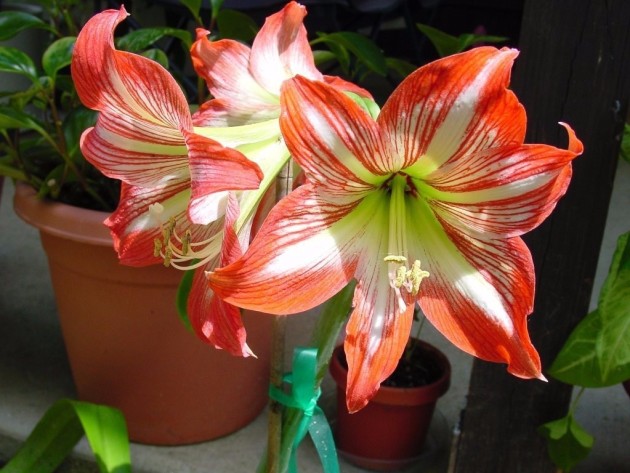
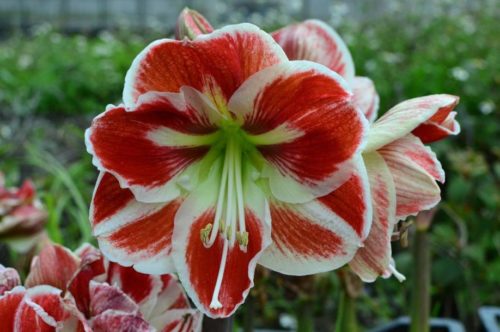

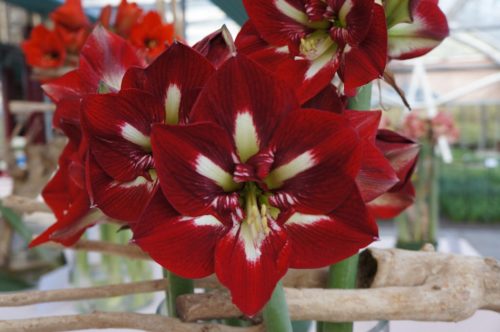
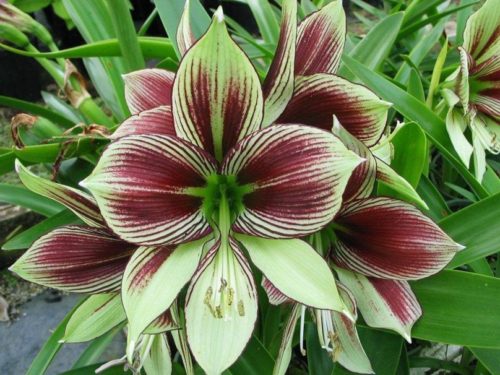
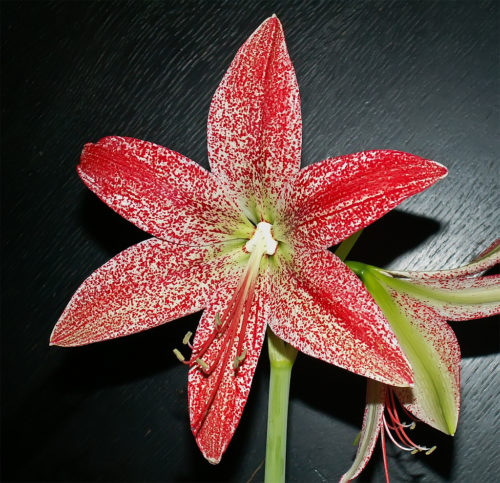


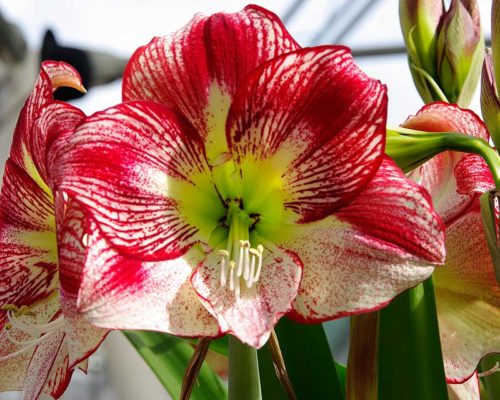
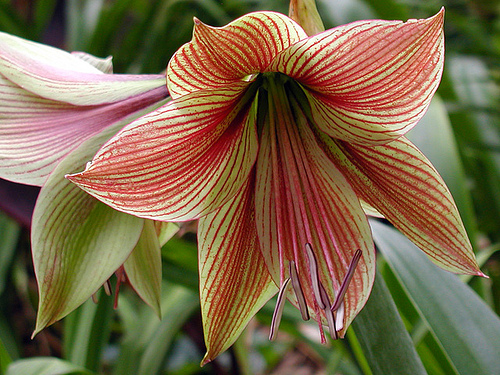
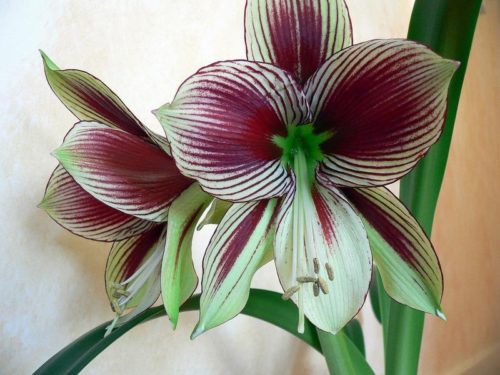
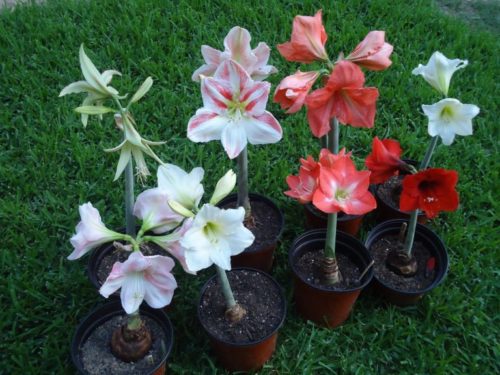
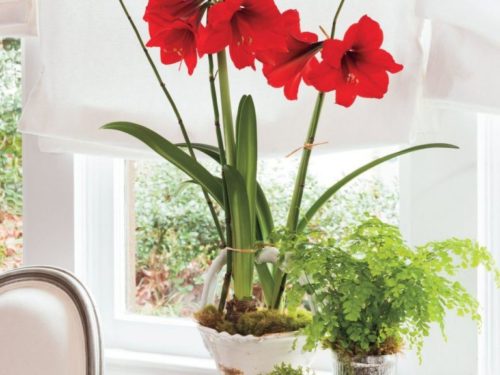
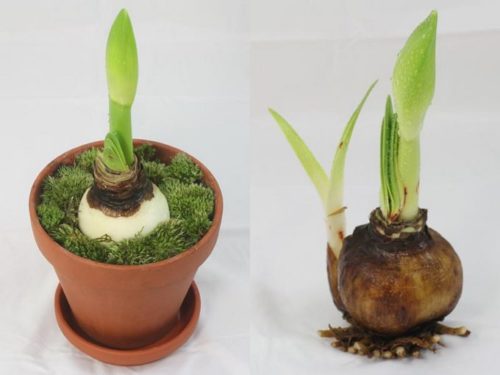
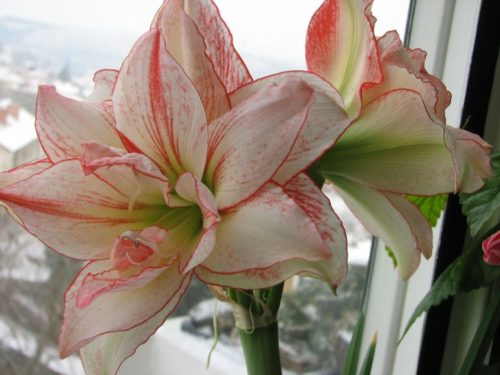
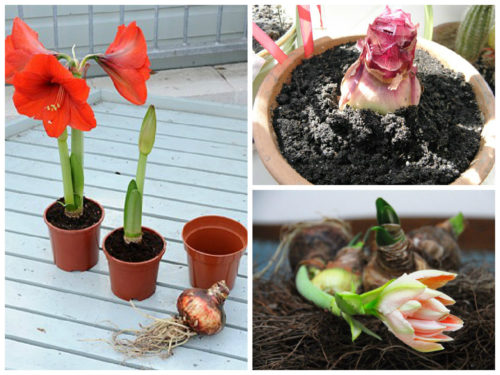


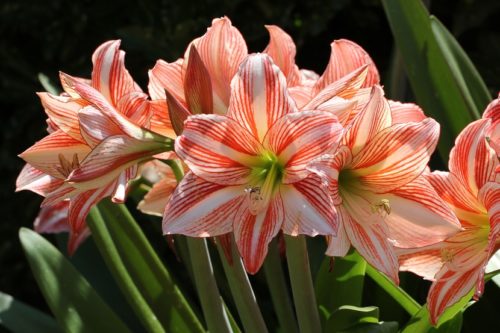
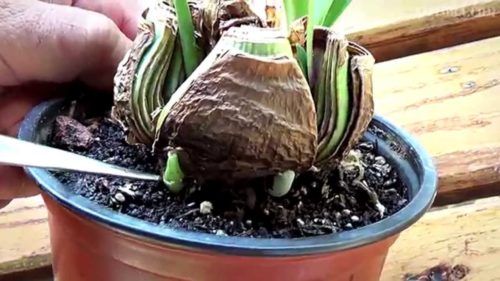
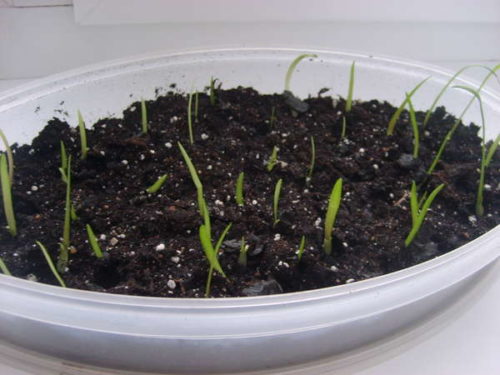
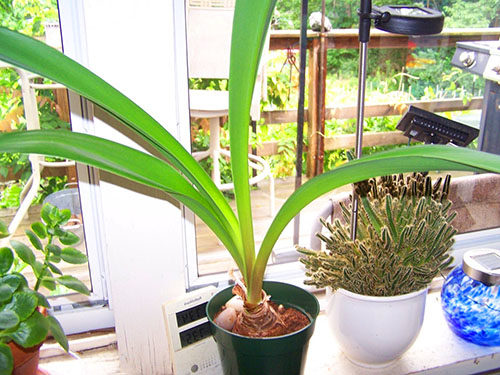

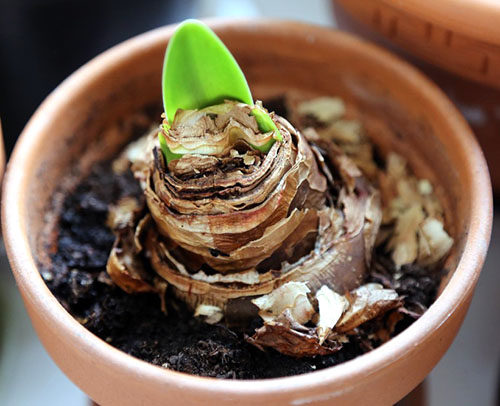

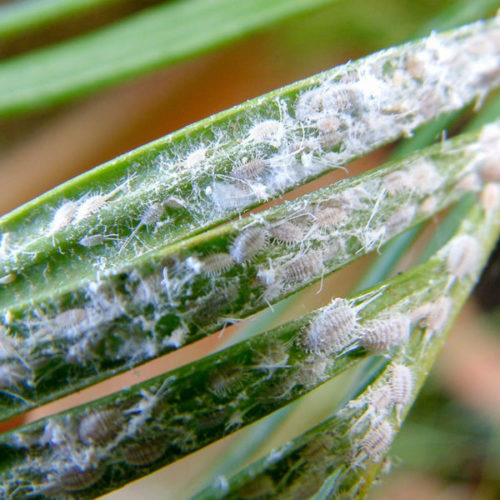

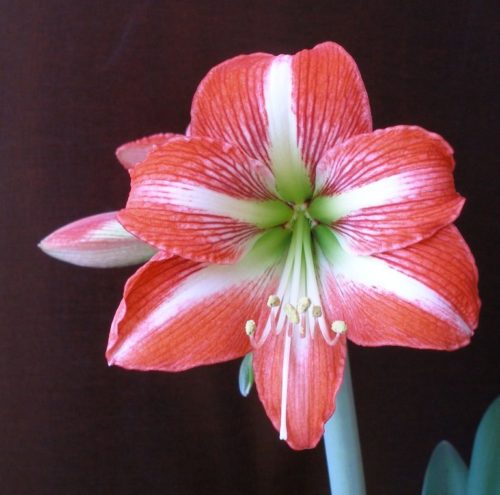
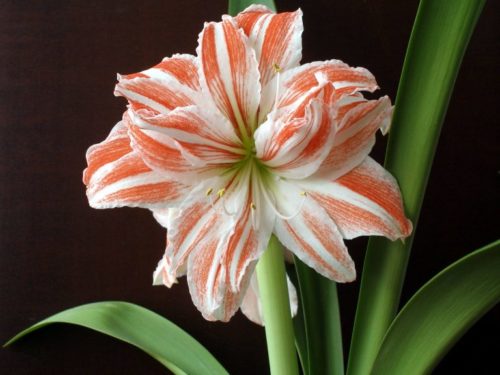
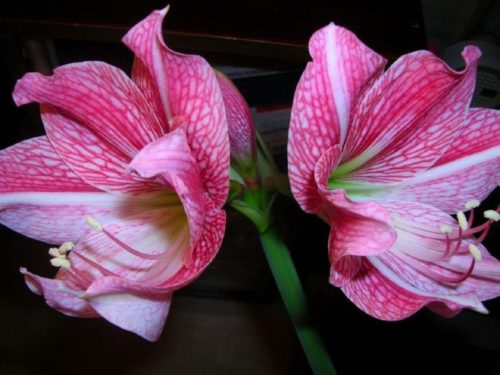












 Start a discussion ...
Start a discussion ...